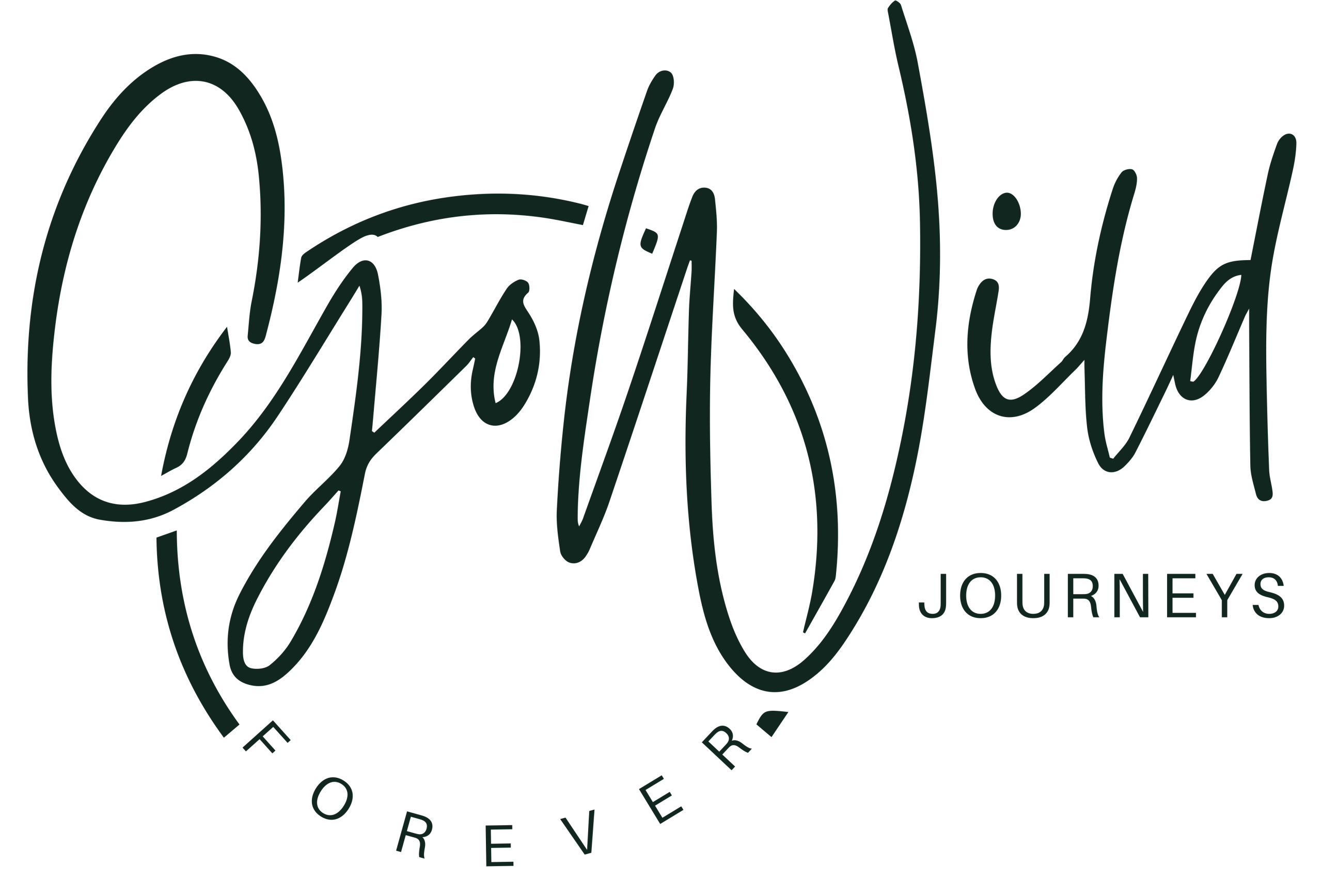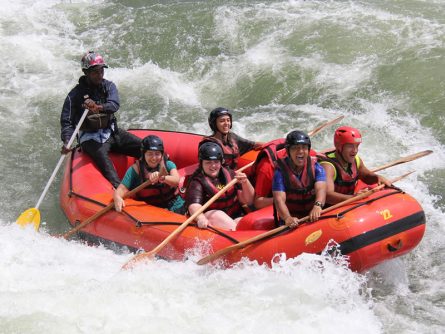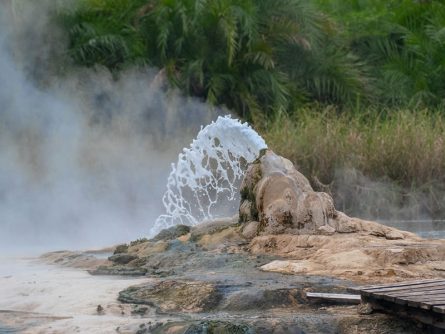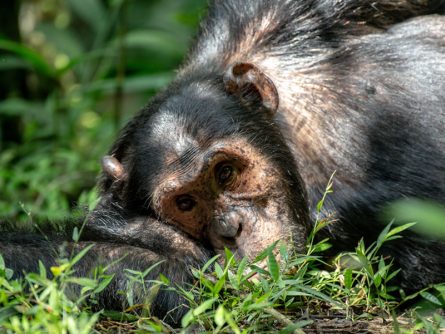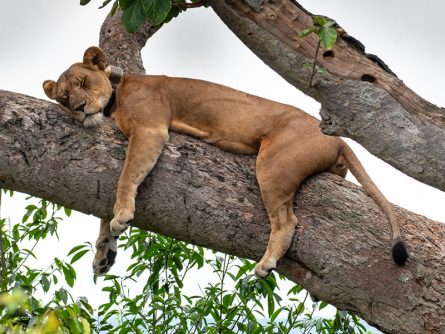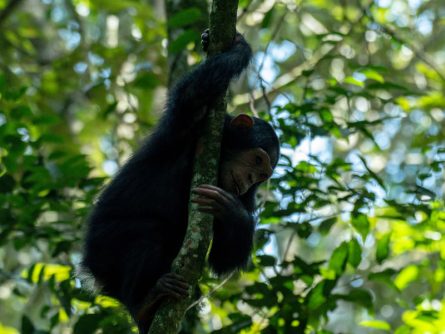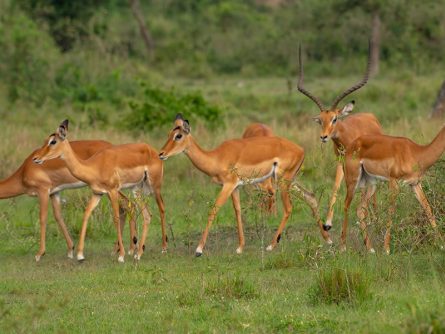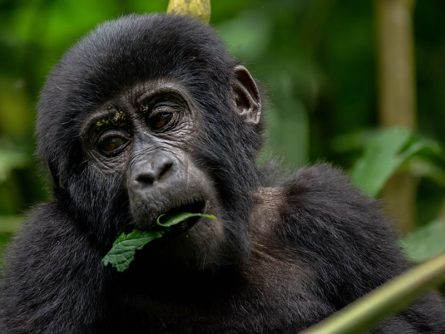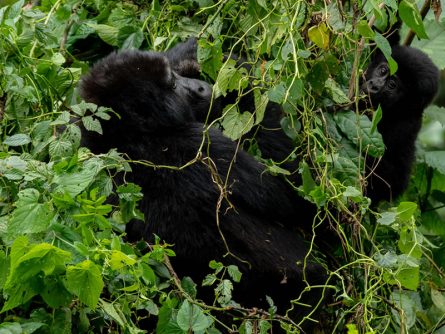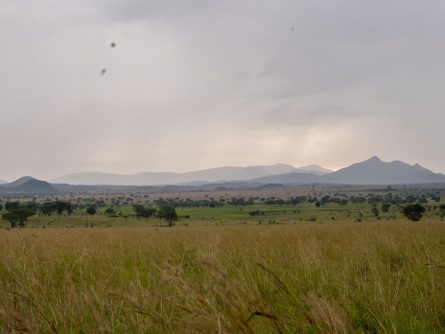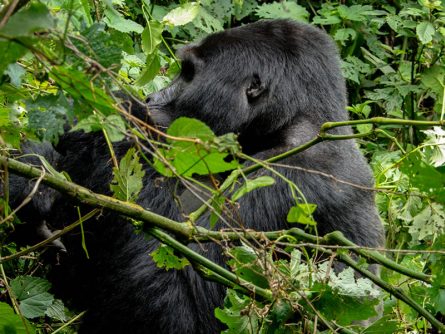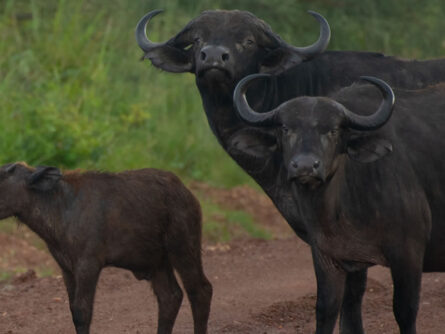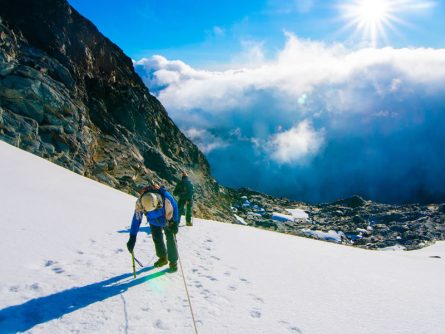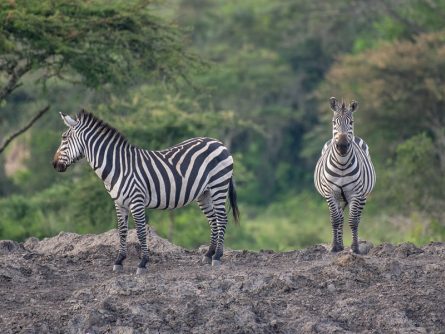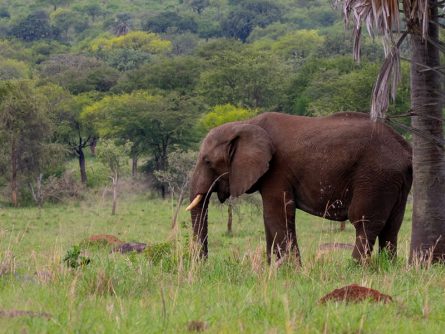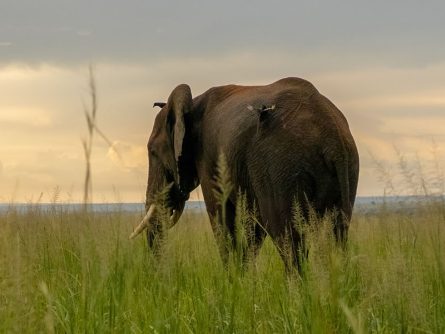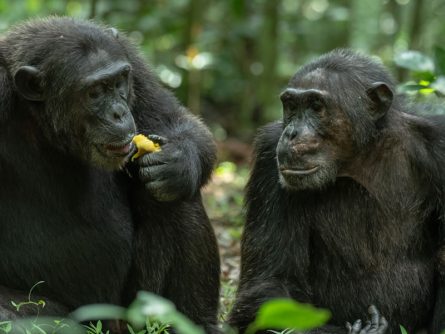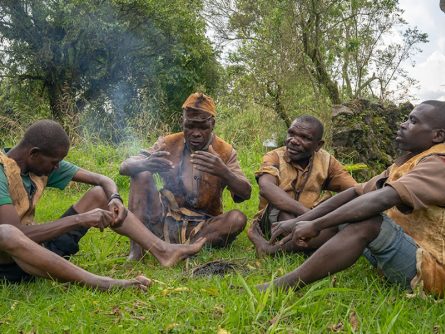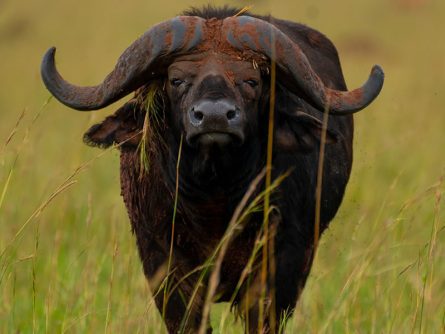Frequently Asked Questions About
Exploring Uganda
Welcome to Uganda, the "Pearl of Africa." Uganda offers a unique blend of adventure, culture, and natural beauty. From tracking endangered mountain gorillas in misty forests to cruising along the mighty Nile River, Uganda promises unforgettable experiences. But before you embark on your journey, you likely have a few questions. To help you prepare, we've put together this list of Frequently Asked Questions (FAQs) covering everything from travel logistics to cultural tips.
Is Uganda Safe for a Safari?
Uganda is a captivating adventure safari destination teeming with biodiversity, vibrant cultures, and stunning landscapes. However, one of the most asked questions by travelers before embarking on a journey to this incredible East African gem is: "Is Uganda safe for a safari?" The short answer is yes. Uganda is generally safe for tourists, especially those on well-organized safaris. In this guide, we provide a comprehensive overview of the safety considerations for traveling in Uganda, ensuring your trip is not only memorable but also secure.
Do I need a visa to enter Uganda?
Yes, you do need a visa to enter Uganda. All guests are required to apply for a visa online before traveling to Uganda. Please click on the link to apply for your Visa.
There are two types of tourist visas available:
- Uganda Tourist Visa (Single-entry): Valid for 90 days. The fee is USD 50.
- East Africa Tourist Visa: Valid for 90 days and allows multiple entries between Rwanda, Uganda, and Kenya. Costs USD 100.
What are the top tourist attractions in Uganda?
- Gorilla trekking/Habituation: This allows travellers to spend 1 magical hour with the Gorillas watching them play and nature for a normal gorilla trekking and 4 Hours for a habituation experience. This is only done in Bwindi Impenetrable and Mgahinga Gorilla Parks.
- Chimpanzee tracking/Habituation: This allows travellers to track and spend 1 hour with the Chimps and 4 hours for a habituation experience in the “Primate Capital”, Kibale National Park. There are several other places in Uganda where one can see the chimps, but none of them match the experience in Kibale. These include Ngamba Island, Kalinzu, Budongo, and Bugoma forests.
- Murchison Falls: Watch these spectacular falls, one of the strongest falls in the world, on your safari to Murchison Falls National Park.
- Big Five Safaris: Embark on game drive safaris in the most spectacular wildlife parks and spot the big five, including lions, Leopards, Elephants, Rhinos, and buffalo in parks like Murchison Falls, Kidepo Valley, and Queen Elizabeth National Park.
- Boat Safaris: Encounter numerous aquatic animals and spectacular landscapes as you glide along the waters of wildlife-rich Kazinga channel in Queen Elizabeth Park, the River Nile to the bottom of the Murchison Falls, Lake Bunyonyi, and more.
When is the best time to visit Uganda?
Although Uganda can be visited throughout the year, the best time to visit Uganda for a safari is during the dry season. Uganda's long dry season from June to mid-September and a short dry season from December to February offer the best conditions for spotting the country’s top attractions: the mountain gorilla, as the terrain during this period is dry and not slippery. Whereas the long rainy season is from March to May, and a shorter rainy season from October to November, when the rain is heavy and persistent, the terrain is always slippery, making it difficult for guests to access the primates.
Do I need vaccinations for my Ugandan Trip?
Yes, a certificate of yellow-fever vaccination is certainly required for your Visa to be approved in Uganda. Although Uganda hasn’t had a yellow fever case for numerous years now, yellow fever vaccination is advised, especially for transit through affected countries. We recommend that our guests visit their doctors, health department, or embassy in their country of origin to be advised on vaccinations and anti-malarials. All hotels, camps, and lodges that we work with and are situated in mosquito-prevalent areas provide mosquito nets over the beds. Please make use of them.
Where Can I See Mountain Gorillas?
Gorilla trekking takes place in two National Parks, i.e, Bwindi Impenetrable and Mgahinga Gorilla Park. These are both located in Southwestern Uganda. Bwindi Impenetrable National Park is home to approximately half of the world’s remaining mountain gorillas. Guided treks are led by expert rangers, and each trek allows visitors to spend one magical hour with a habituated gorilla family in their natural habitat. Each gorilla trekking group is limited to 8 people, ensuring a personal and low-impact experience.
How Far are Gorillas from Kampala?
Approximately a +9-hour drive from Kampala to the Bwindi and Mgahinga headquarters. Depending on the gorilla family you are visiting, you may start the trek from the park offices or need to drive from the park headquarters to the starting point. This drive may vary from 30 minutes to 1 hour.
Is gorilla trekking safe?
Yes, gorilla trekking is safe. Gorilla treks are led by experienced guides and armed rangers to protect you from hostile forest elephants if you happen to encounter one. Gorilla groups are limited to 8 guests per gorilla family visited to minimize impact on the gorillas and enhance safety.
Gorilla trekking is physically demanding as the terrain in Bwindi and Mgahinga is rugged, steep, and uneven. Gorilla treks can last anywhere from 1 to 6 hours, depending on where they slept the previous night. We recommend a moderate level of fitness.
What should I expect during a gorilla trekking experience?
Awesome encounter always described as “Once in a lifetime experience” and memories worthy of keeping and telling. Gorilla trekking starts with a briefing session from experienced head guides and allocation of gorilla families. This is then followed by stepping on the trails into the deep forest searching for the gentle giants.
The hike can last anywhere from 1 to 6 hours, depending on the location of the gorilla family you’re tracking. Expect to trek through dense forests, up steep hills, and across uneven terrain. It’s essential to be in good physical condition and to wear sturdy, comfortable hiking boots.
Once you locate the gorilla family, you’re privileged to spend up to 1 hour watching them from a safe distance of usually 7 meters, although they might come closer to you and even rub shoulders with you. You’ll get to observe their behavior, and sometimes even have close encounters as they go about their daily activities.
How much does it cost to see gorillas in Uganda?
- A gorilla trekking permit costs USD 800 per person. Includes Park entry fees.
- A gorilla habituation permit costs USD 1500 per person. Includes Park entry fees.
How do I book a gorilla trekking permit in Uganda?
Gorilla trekking permits are sold by the government through the Uganda Wildlife Authority (UWA). Only registered tour operators/companies are allowed to buy gorilla permits. It is recommended to book at least 6 months in advance due to high demand, especially in high seasons of June-September and December to February. Future availability is never guaranteed except when its booked and paid.
What is the minimum age allowed to trek gorillas? Are children allowed to trek Gorillas?
The minimum age for gorilla trekking in Uganda is usually 15 years old. However, some families or private groups may be allowed to trek with children under 15 at the discretion of the park authorities.
What should I pack for a safari in Uganda?
- Worn-in waterproof lightweight hiking boots separate from your daily regular wear
- Gloves to protect hands (Gardening gloves) from holding thorns, brush, and stinging nettles
- Lightweight long socks
- Cotton t-shirts in neutral colors. Please note that Blue or Black colored clothes are not advised due to their tendency to attract Tsetse flies.
- Outdoor/waterproof and breathable pants and an insulated jacket (preferably Gortex) with a hood to wear on top of your quick dry undershirt. A poncho is a good, lightweight alternative to a waterproof jacket.
- Lightweight fleece sweater or cardigan - helps in layering for cool mornings.
- Soft, long-sleeved shirts
- Jeans
- Scarves
- Sneakers
- Good-sized bottled water
- Camera
- Fully wrapped energy snack bars
- Hat, sunblock, and sunglasses with neck strap
- Small and lightweight backpack to carry your gear
- Insect repellent and anti-malarial tablets, and any other prescribed medication from your physician.
- Anti-malarial tablets
- Mask (You are no longer required to put on a mask while in public, but you can carry a few for the Primates trekking, as it's still a requirement).
How much is the cost of a safari in Uganda?
Prices of Uganda safaris widely vary depending on the accommodation preference included in the package, the number of days/lengths of stay for the entire package, and activities included, and the number of guests taking up the safari package. Below is a breakdown indicating the type of safari experience based on accommodation rates:
- Budget Safaris: These can range between US$1,500 – US$2,000 per person
- Mid-Range Safari packages: These can range between US$2500 – US$ 6,000 per person, depending on the activities involved and the number of days.
- High-end and Luxury Safari packages: These can range between US$6,000 – US$15,000 per person, depending on the activities involved and the number of days.
Are credit cards or debit cards accepted in Uganda?
Yes. ATMs are spread across the country in all major cities, although they may fail to dispense cash. Credit cards are widely accepted at major hotels and shopping malls in Uganda, except local markets. VISA and Mastercard are mainly accepted, plus Visitors are allowed to import an unlimited amount of foreign exchange. It is advisable to pay your extra bills and check out the night before you depart from a hotel or lodge to avoid long delays in the morning.
What is the recommended Tip in Uganda?
Tipping during and after a safari is becoming more common in the tourism industry in Uganda. While tipping is at your discretion, we have received several requests from our clients about what a good tip would be. We usually recommend that our clients tip as follows. This is only a guideline, like I said in the earlier sentence, tipping entirely depends on the service and the client’s wishes.
- Gorilla / Chimp ranger guides: We recommend between US$10 -20+ per guest.
- Guide who accompanies you throughout your safari: We recommend US$$20 – $50+ per guest per day.
- Gorilla / Chimp tracker: We recommend between US$10 and 20+ per guest.
- Gorilla/chimpanzee trekking porters charge a fee of US$20 per person.
- Waiters – we recommend a tip of US$5 per person per meal, or if the service is exceptional, you can tip more.
What Is Accommodation Like on Safari?
Uganda, as a tourism destination, offers a wide range of accommodation options, from budget lodges to luxury safari camps. Uganda has attracted several luxury brands like Asilia Africa, Abercrombie & Kent to open lodges and camps in tourism locations. GoWild Forever Journeys provides detailed information, handpicks, and recommends the best hotels and lodging facilities, whether in the cities or the safari parks.
What type of Vehicles Are Used on Safari with GoWild Forever Journeys?
At GoWild Forever Journeys, we understand that comfort while on the safari is paramount to shaping the entire safari experience. We use 4x4 safari vehicles, including Toyota Land Cruisers extended and converted with pop-up roofs opened while the vehicle is in slow motion in the parks and stops for scenery so that clients can stand up to view and photograph easily while on a safari. These are designed for rugged terrain and maximum visibility.
What Languages are spoken in Uganda?
English is the official language and is widely spoken across the country. Swahili is the alternate language used mainly by security forces and a few Ugandans. Although French, German, Spanish, and Chinese languages are not spoken in Uganda, we have multilingual guides speaking English, Swahili alongside one of the above languages.
What Is Uganda’s Altitude?
Uganda's altitude ranges from a minimum of 614 meters (2,014 feet) at the Albert Nile to a maximum of 5,111 meters (16,768 feet) at Margherita Peak on Mount Stanley. The country is predominantly a plateau, with an average altitude of around 900 meters (3,000 feet).
Recommended
Uganda Safari Inspirations
Contact us
Call us for a chat about our holidays.
We are happy to discuss your holiday and help in any way we can.
© 2025 GoWild Forever Journeys - All Rights Reserved | Brand by Robylinks Solutions
